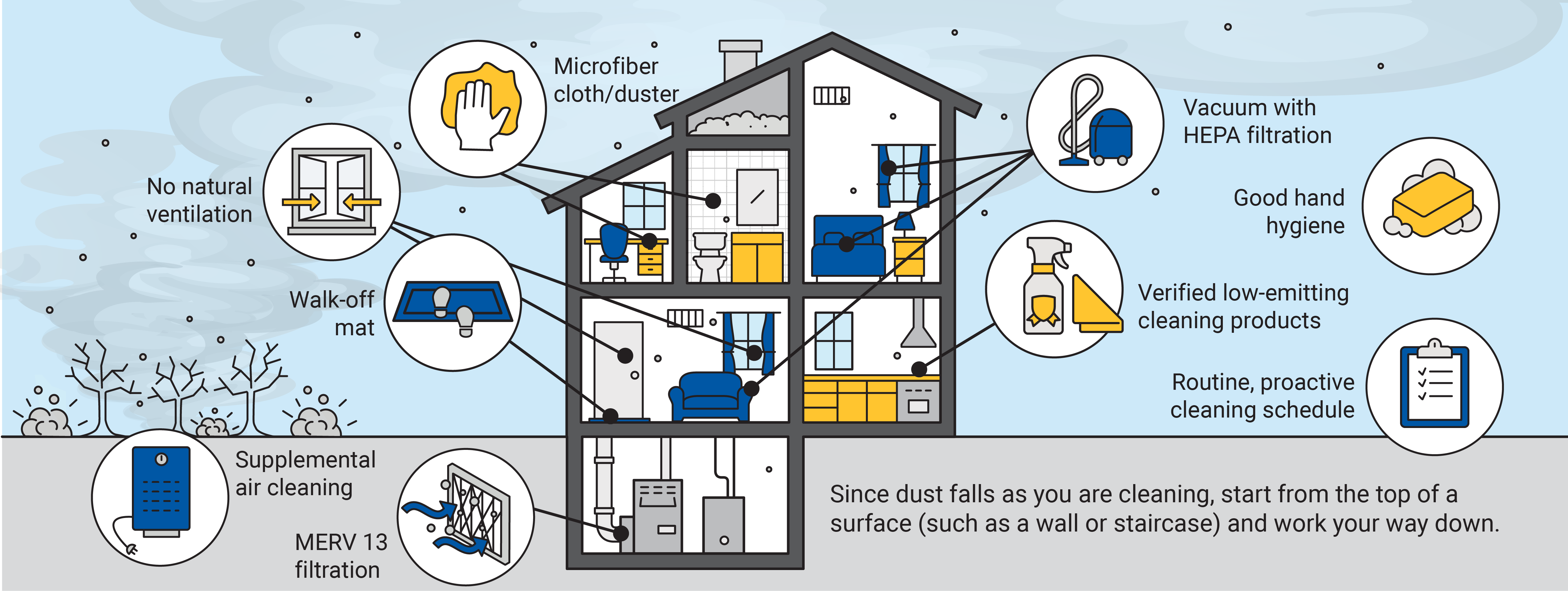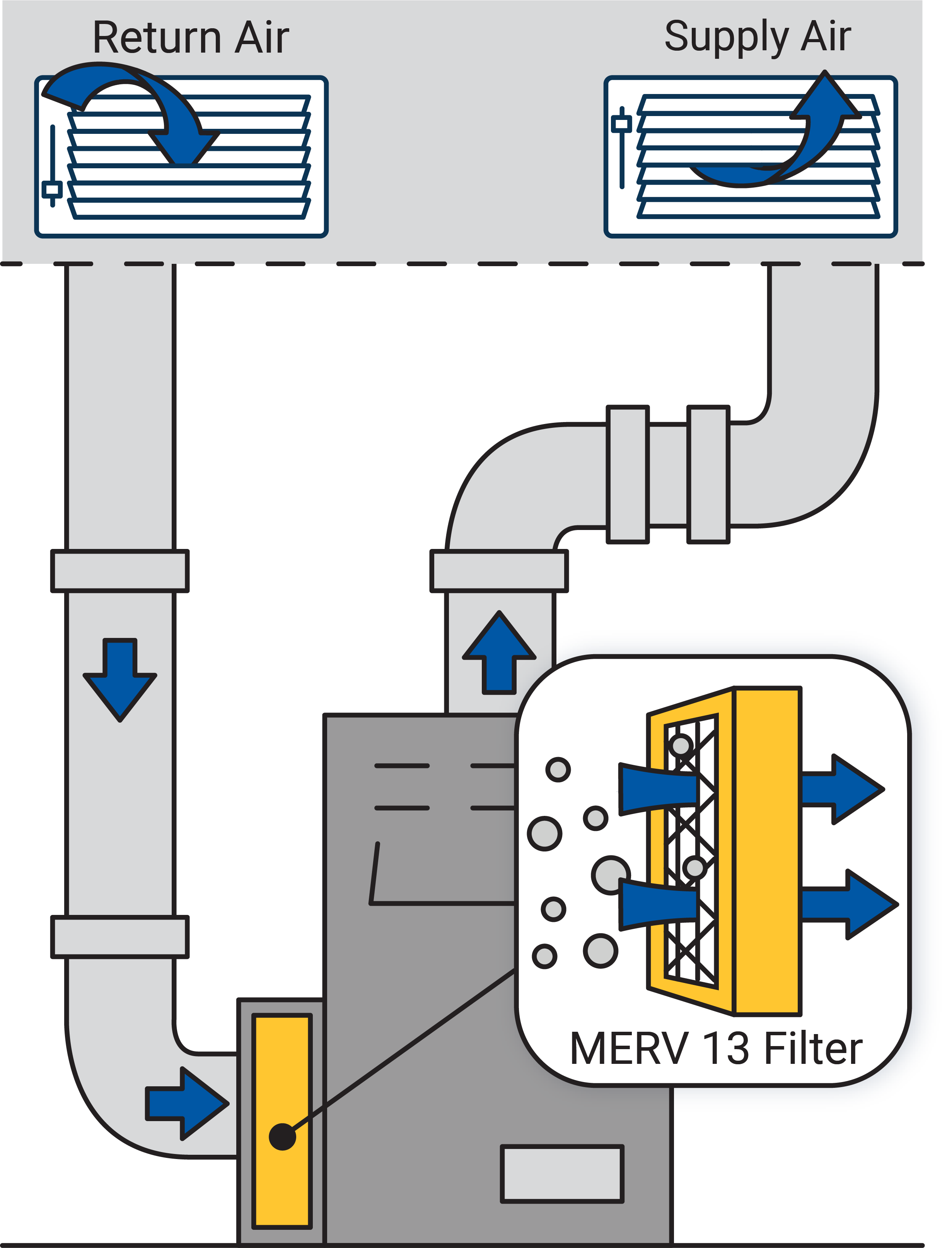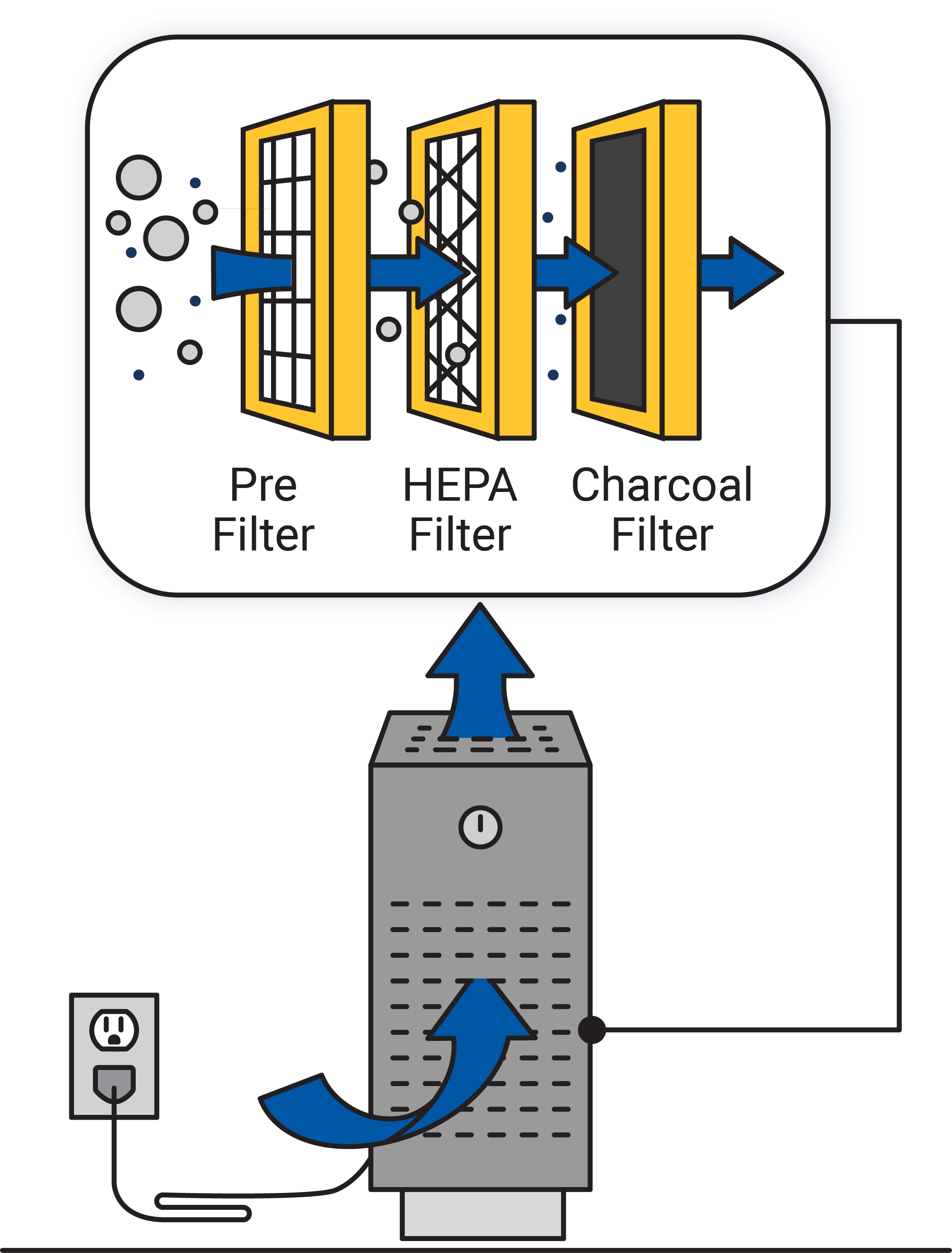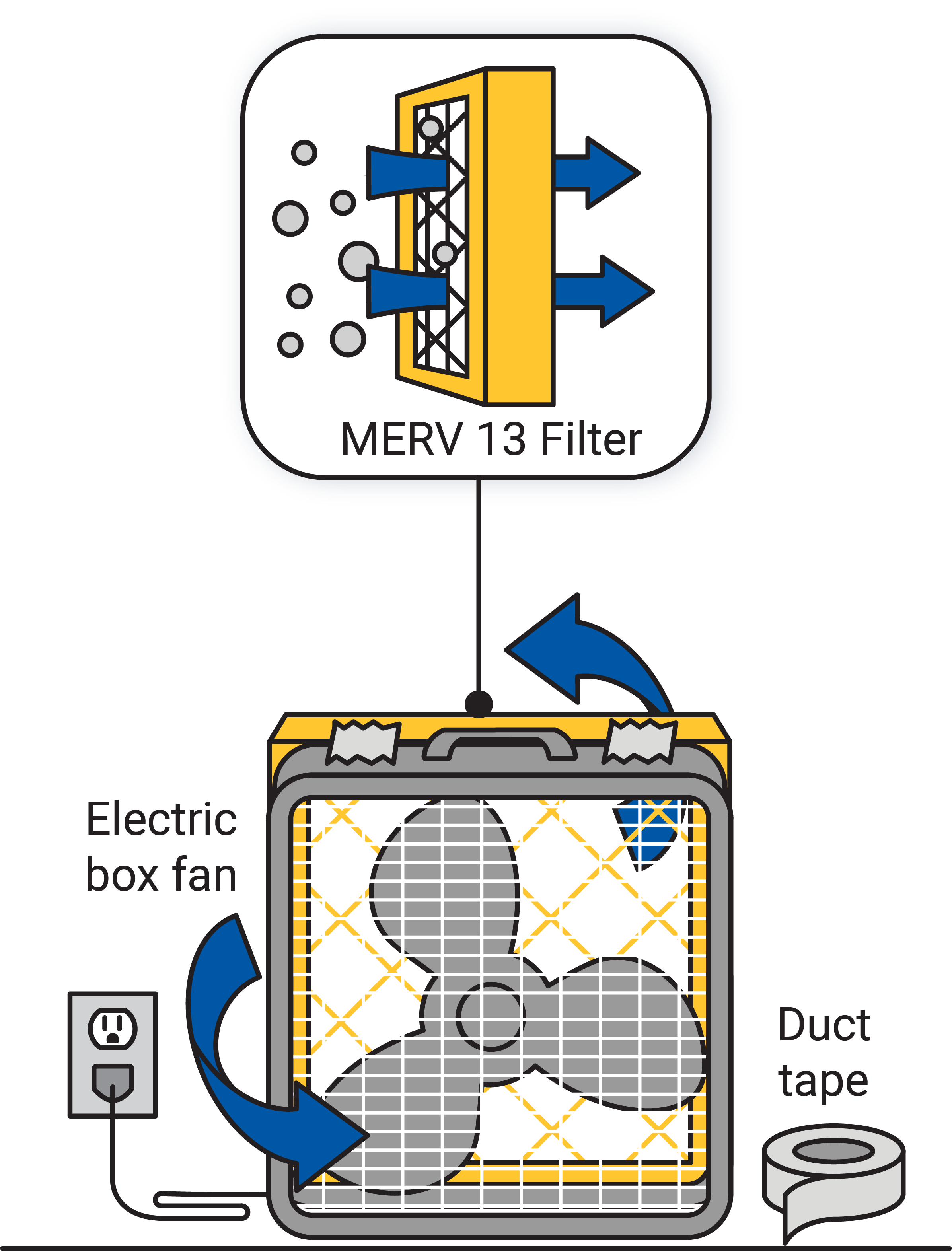Before, during, and after a fire event, monitor and follow all guidance from local emergency response agencies, including any evacuation orders. This guidance focuses on how you can protect your health and reduce the impact of wildfire emissions in your home (beyond the immediate danger of the fire). First, limit the entry of pollutants into your home by keeping doors and windows closed and running your HVAC system appropriately. Then, reduce your exposure risks by cleaning the air and settled dust in your home.

Limit the entry of pollutants into your home by keeping doors and windows closed. Understanding your outdoor air quality helps you know whether using natural ventilation (open windows) will help or hurt your indoor air quality. Check airnow.gov for the current Air Quality Index (AQI) for your area. When the air quality is Good (an AQI of 0-50), consider opening your windows to air out your home. When the AQI is above 50, keep the windows closed to limit the entry of PM2.5.
Air filtration (or “air cleaning”) is one of the most practical and effective ways to safeguard indoor air quality during and after a fire. An air filter is designed to capture and remove pollutants from the air in a room. Since PM2.5 is so small, a high-quality air filter is needed to capture it. Air can be filtered through either a residential heating, ventilation, and air conditioning (HVAC) unit or a stand-alone air cleaner.
If your home has a mechanical internal HVAC, contact a professional to determine if the HVAC system can support a Minimum Efficiency Reporting Value (MERV) 13 filter. MERV is an industry standard measurement of an HVAC filter’s ability to capture particles. The higher the MERV rating, the better the filter is at capturing smaller particles; however, many residential HVAC systems are only designed to support lower rated MERV filters. Do not attempt to use a MERV 13 filter if the system is not designed to support it.


Another option is to use a commercially available portable air cleaner. Purchase an air cleaner that has been verified by the Association of Home Appliance Manufacturers (AHAM) to have a clean air delivery rate (CADR) that is two-thirds of the area of the room where it will be used. CADR is a measure of how much filtered (cleaned) air an air cleaner can deliver. The higher the CADR, the more clean air the system is able to produce.
Air cleaners should also have high efficiency particulate air (HEPA) filtration, which means the filter is capable of capturing at least 99.97% of particles. Finally, consider purchasing an air cleaner with activated charcoal filtration, which may remove some VOCs in the air. Keep in mind that charcoal filters do not last long and may need to be changed frequently. Never purchase an air cleaner that introduces ozone.
Studies have found that using a high-efficiency filter on a residential HVAC system can capture up to 97% of particles, and portable air cleaners can capture 48–78% of particles.
Many people have begun using DIY air cleaners to remove particles from their homes during a wildfire event. This can be an accessible, affordable approach to air filtration. Construct a DIY air cleaner using an electric box fan, a MERV 13 filter, and duct tape. The box fan should have a manufacture date after 2012 and be certified to meet the ANSI/UL 507 safety standard for electric fans. The MERV 13 air filter should be sized to fit the box fan (20” x 20”).

While people may primarily associate air and water contamination with fires, there is the often-overlooked hazard of settled dust. During and after a fire, even after the sky clears, a hazardous mixture of particulate matter (PM), dust, and ash can infiltrate homes and other buildings. If not properly removed, this dust can settle on surfaces, contaminate textiles like carpet and upholstered furniture, and even resuspend in the air, presenting a continued exposure risk. The majority of household dust comes from the outside through windows, doors, vents, and on the soles of shoes. Therefore, in the aftermath of a fire, it is particularly important to take additional steps to remove settled dust.